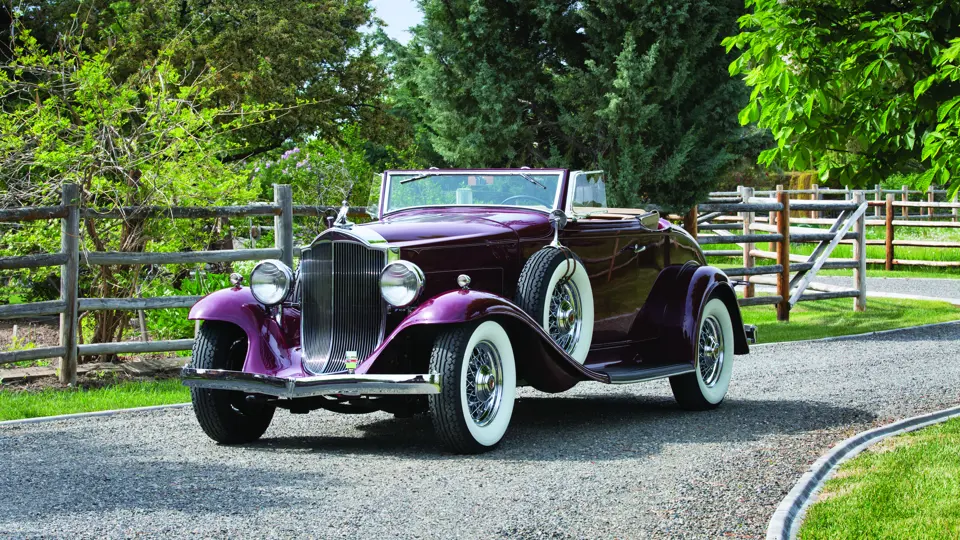
1932 Packard 900 Light Eight Roadster Coupe
{{lr.item.text}}
$88,000 USD | Sold
{{bidding.lot.reserveStatusFormatted}}
- 319-cid, 110-hp inline eight-cylinder engine
- Three-speed manual transmission
- Desirable model with older restoration
- One year only model
- CCCA eligible
- Rumbleseat & sidemounts
- Many other period features
- Distinctive "shovel nose"
Packard’s Ninth Series line for 1932 was comprised of a curious mix. At the bottom was a new lower-priced car, the Light Eight Model 900. It was not much smaller than other Packards (just two inches shorter than the Standard Eight), but it was indeed lighter, tipping the scales between 3,930 to 4,115 pounds, compared to the larger car’s 4,317 to 4,735 pounds. More importantly, it sold between $1,750 and $1,795, which was a good $700 less than comparable Standard Eight body styles. At the upper end, the company brought back the Twin Six, as a reprise of the 1916–1922 flagship, but it had a wholly new engine that was designed by Cornelius Van Ranst, whose credits included the Cord L-29. This new Packard was offered with no fewer than 21 body styles and was priced between $3,745 and $7,950.
The Light Eight was Packard’s first real attempt to counter the Depression, and through no faults in the platform, it was only offered for a year as its slightly lower price did not draw a new class of clientele towards the marque. Nonetheless, this model has been freely called “remarkable.” The Light Eight is recognized by the CCCA; it is driven by a 319-cid, 110-hp inline eight-cylinder engine that is paired to a three-speed manual transmission.
This example displays an older restoration and is the desirable roadster model. It features a rumbleseat, dual sidemount spares, strapped pedestal mirrors, beautiful tan interior, radiator mascot, luggage rack, windwings, chromed wire wheels and whitewall tires. The Light Eight is recalled as most memorable for its sweeping modern lines and its distinctive “shovel nose.”


 | Santa Monica, California
| Santa Monica, California


